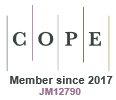Predation of the northern quoll by the Pilbara olive python
Ryan J. Ellis A B * , Christopher G. Knuckey A , Judy Dunlop C and Georgeanna Story D E
C and Georgeanna Story D E
A
B
C
D
E
Abstract
Little is known about predator–prey interactions between many native predator species occupying the same habitats. Interaction between native predators is generally not well documented, given their often cryptic occurrence and infrequent overlapping ecological niches or activity periods they occupy. Here we report on an occurrence of predation of the northern quoll (Dasyurus hallucatus) by another native predator in the Pilbara region, the Pilbara olive python (Liasis olivaceus barroni).
Keywords: Dasyuridae, diet, hair analysis, Pilbara, predation, Pythonidae, scat analysis, threatened species.
References
Cowan, M., Moro, D., Anderson, H., Angus, J., Garretson, S., and Morris, K. (2020). Aerial baiting for feral cats is unlikely to affect survivorship of northern quolls in the Pilbara region of Western Australia. Wildlife Research 47, 589-598.
| Crossref | Google Scholar |
Cramer, V. A., Dunlop, J., Davis, R., Ellis, R., Barnett, B., Cook, A., Morris, K., and van Leeuwen, S. (2016). Research priorities for the northern quoll (Dasyurus hallucatus) in the Pilbara region of Western Australia. Australian Mammalogy 38(2), 135-148.
| Crossref | Google Scholar |
Cremona, T., Crowther, M. S., and Webb, J. K. (2014). Variation of prey responses to cues from a mesopredator and an apex pedator. Austral Ecology 39, 749-754.
| Crossref | Google Scholar |
Cutten, D., Goodyear, G., Tarrant, T., Fitzsimons, J., and Palmer, G. (2013). Rails following snakes: Predator-response behaviour, potential prey, prey-flushing or curiosity? Australian Field Ornithology 30, 97-102.
| Google Scholar |
Dunlop, J. A., Rayner, K., and Doherty, T. S. (2017). Dietary flexibility in small carnivores: a case study on the endangered northern quoll, Dasyurus hallucatus. Journal of Mammalogy 98(3), 858-866.
| Crossref | Google Scholar |
Ellis, R.J. (2013). Liasis olivaceus barroni (Pilbara olive python). Diet. Herpetological Review 44(4), 693.
| Google Scholar |
Ellis, R. J., and Johnstone, R. E. (2016). Liasis olivaceus barroni (Pilbara olive python). Diet. Herpetological Review 47(4), 685.
| Google Scholar |
Ellis, R. J., Knuckey, C., Proctor, C., Jenkins, A., O’Connell, M., and Story, G. (2021). Liasis olivaceus barroni (Pilbara olive python) diet. Herpetological Review 52(3), 669-671.
| Google Scholar |
Fill, J. M., Freeman, A. B., Story, G., and Curran, T. J. (2013). Predation on a cryptic rainforest rodent (Pogonomys sp.) by a carpet python (Morelia spilota). Australian Mammalogy 35, 224-226.
| Crossref | Google Scholar |
Fillios, M., Gordon, C., Koch, F., and Letnic, M. (2010). The effect of a top predator on kangaroo abundance in arid Australia and its implications for archaeological faunal assemblages. Journal of Archaeological Science 37, 986-993.
| Crossref | Google Scholar |
Glen, A. S., and Dickman, C. R. (2008). Niche overlap between marsupial and eutherian carnivores: does competition threaten the endangered spotted-tailed quoll? Journal of Applied Ecology 45(2), 700-707.
| Crossref | Google Scholar |
Glen, A. S., Pennay, M., Dickman, C. R., Wintle, B. A., and Firestone, K. B. (2011). Diets of sympatric native and introduced carnivores in the Barrington Tops, eastern Australia. Austral Ecology 36(3), 290-296.
| Crossref | Google Scholar |
Hernandez-Santin, L., Goldizen, A.W., and Fisher, D. O. (2016). Introduced predators and habitat structure influence range contraction of an endangered native predator, the northern quoll. Biological Conservation 203, 160-167.
| Crossref | Google Scholar |
Johnson, M. K., and Alred, D. R. (1982). Mammalian prey digestibility by bobcats. Journal of Wildlife Management 46, 530.
| Crossref | Google Scholar |
Jolly, C. J., Kelly, E., Gillespie, G. R., Phillips, B., and Webb, J. K. (2018). Out of the frying pan: Reintroduction of toad-smart northern quolls to southern Kakadu National Park. Austral Ecology 43, 139-149.
| Crossref | Google Scholar |
Jolly, C. J., Smart, A. S., Moreen, J., Webb, J. K., Gillespie, G. R., and Phillips, B. L. (2021). Trophic cascade driven by behavioral fine-tuning as naïve prey rapidly adjust to a novel predator. Ecology 102(7), e03363.
| Crossref | Google Scholar | PubMed |
Kamper, W., Webb, J. K., Crowther, M. S., Greenlees, M. J., and Shine, R. (2013). Behavious and suvivorship of a dasyurid predator (Antechinus flavipes) in response to encounters with the toxic and invasive cane toad (Rhinella marina). Australian Mammalogy 35, 136-143.
| Crossref | Google Scholar |
Kotler, B. P., Brown, J. S., Slotow, R. H., Goodfriend, W. L., and Strauss, M. (1993). The influence of snakes on the foraging behaviour of gerbils. Oikos 67(2), 309-316.
| Crossref | Google Scholar |
Low, T. (1989). Python on the prowl. Australian Natural History 23, 58-65.
| Google Scholar |
Moore, H. A., Dunlop, J. A., Jolly, C. J., Kelly, E., Woinarski, J. C. Z., Ritchie, E. G., Burnett, S., van Leeuwen, S., Valentine, L. E., Cowan, M. A., and Nimmo, D. G. (2021). A brief history of the northern quoll (Dasyurus hallucatus): a systematic review. Australian Mammalogy 44(2), 185-207.
| Crossref | Google Scholar |
Oakwood, M., and Miles, G.L. (1998). Predation of a marsupial carnivore by an olive python (Liasis olivaceus) and a king brown snake (Pseudechis australis). Herpetofauna 28(1), 19-21.
| Crossref | Google Scholar |
Palmer, R., Anderson, H., Richards, B., Craig, M. D., and Gibson, L. (2021). Does aerial baiting for controlling feral cats in a heterogeneous landscape confer benefits to a threatened native meso-predator? PLoS One 16(5), e0251304.
| Crossref | Google Scholar | PubMed |
Pearson, D. (2003). Giant pythons of the Pilbara. Landscope 19(1), 32-39.
| Google Scholar |
Pollock, A. B. (1999). Notes on status, distribution and diet of Northern Quoll Dasyurus hallucatus in the Mackay-Bowen area, mideastern Queensland. Australian Zoologist 31(2), 388-395.
| Crossref | Google Scholar |
Shine, R., and Madsen, T. (1997). Prey abundance and predator reproduction: rats and pythons on a tropical Australian floodplain. Ecology 78(4), 1078-1086.
| Crossref | Google Scholar |


